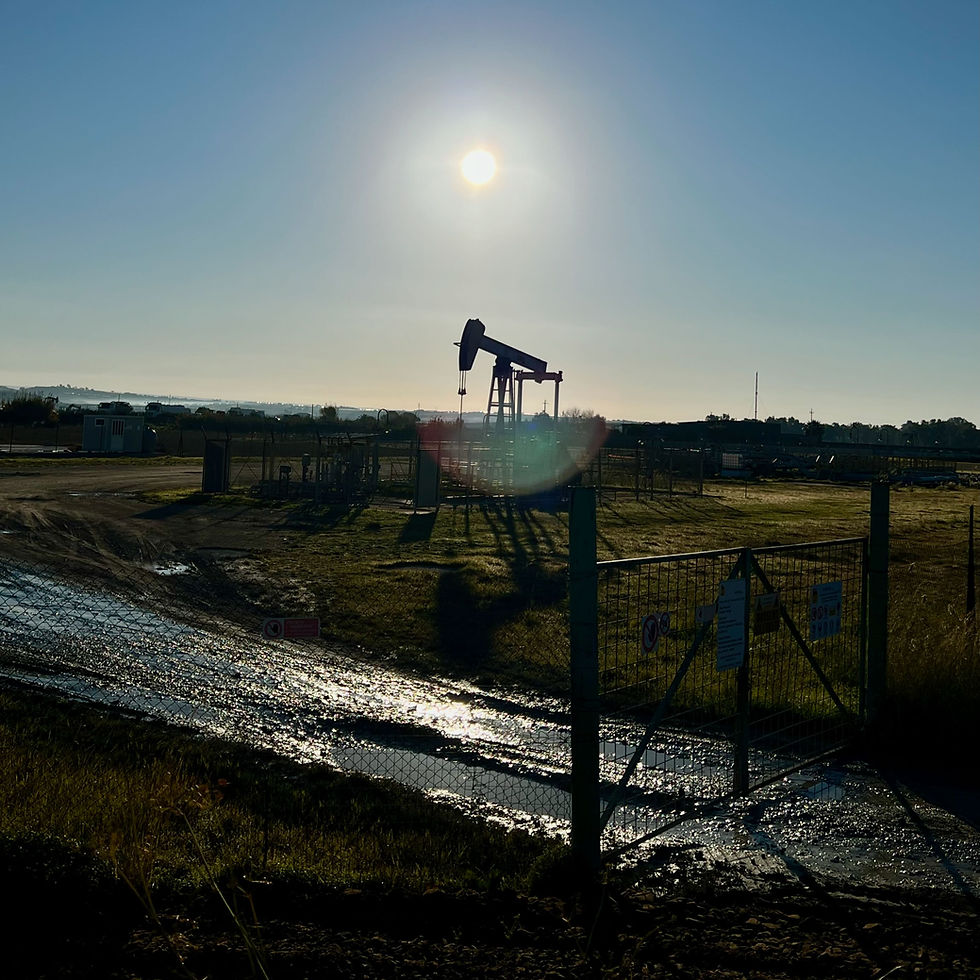Geology and industry: the Gela case
- Cammino Adagio

- Jan 31, 2022
- 3 min read

What looks like the long neck of a huge mechanical giraffe is one of the many active hydrocarbon wells of the Gela plain.
To see them in activity is not common in our country and evokes landscapes from places far as Texas.
There are active wells both onshore and offshore that extract mainly gas, but the great petrochemical refinery that forms the background of the old city is in full transformation: since few years ago it does not refine oil but biofuel.
Gela is one of the world’s most ancient towns. How many cities can claim to have 2700 years of history?
Here the surface and subsurface resources have long attracted people. First for the vast plain of fertile ground, in which great amounts of wheat were cultivated and exported throughout the Mediterranean.
Then, in contemporary history, for fossil fuels.
ENI, the Italian oil and gas company, built Gela refinery in the sixties shortly after discovering oil in the terrain below. It wasn’t only an industrial plant but one of Europe’s biggest refineries and, at the same time, a socio-economic strategy to boost southern Italian economy.
However, some believe that this project of technological development forgot about human development.
“There was a population of fishermen and farmers that was put to work in the industry,” says Pierluigi, a hiker from here who escorted us till the gates of the town.

We dig deeper to know more.
He mentions a book from 1970: “Industrialisation without development. Gela: a southern history.” We find out it’s an essay with, at the very least, an intriguing story.
The authors are Eyvind Hytten and Marco Marchioni, two sociologists that were invited by the very managers of ENI to carry out a case study about Gela’s development. Once published, the book was withdrawn from the market. Even today it’s difficult to find. Like the title alone suggests, their research didn’t seem to please the ENI managers.

In Gela we met wonderful people that gave us a warm welcome and took us to city centre for a walk. They are Alice, Pierluigi, Giovanni, Giuseppe and others from the welcoming committee of the Via Francigena Fabaria.
During our stay, we happened to talk to many people that earned a living by working in the refinery. Some people love it and some people hate it.
Sure thing is that it gave jobs to a large part of the town and beyond. It created wellbeing and wealth. At the same time, it didn’t manage to create public balance; it fostered increase of the population but not of infrastructures and services.

It seems to us that many people still feel like the refinery stepped on their land without giving much back.
“Gela was racing with a Ferrari chassis and an old car’s engine,” wrote S. Parlagreco, a journalist, on the Corriere di Gela in 2020, on the occasion of the death of one of the book’s authors.
In recent years the refinery is undergoing the energy sector transition. Many of its employees have been laid off, many of its structures dismantled.
As for other possibility of employments, there aren’t many alternatives. We wait and see what Gela will become in the future and which other resources will make it rich and special.
One of the most fascinating aspects of our walk is to get to know places like this one, complex and at the same time rich in history and beauty. Such places are complex because the interaction between resources and human being has been erratic and unpredictable. Probably, it will always be. The improvements are built upon mistakes made.
Maybe to develop a place it’s not enough to exploit resources, channel money and jobs. It’s necessary to have coherent plans to pursue, simultaneously, wealth and culture, services and civic sense.
What’s your view on this? Let us know in the comments.





Comments